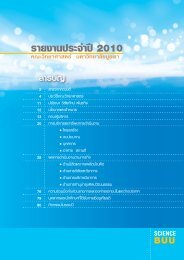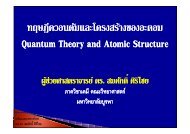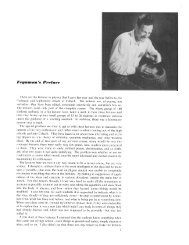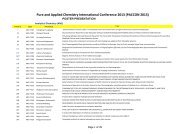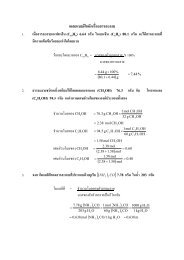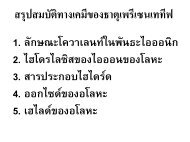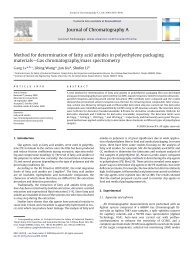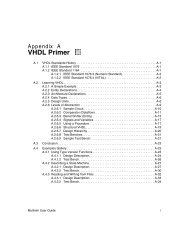USER MANUAL SWAN Cycle III version 40.72A
USER MANUAL SWAN Cycle III version 40.72A
USER MANUAL SWAN Cycle III version 40.72A
Create successful ePaper yourself
Turn your PDF publications into a flip-book with our unique Google optimized e-Paper software.
80 Chapter 4<br />
FORCE wave-induced force per unit surface area (vector; in N/m 2 ).<br />
UBOT the rms-value of the maxima of the orbital velocity near the bottom (in m/s).<br />
Output only if command FRICTION is used. If one wants to output UBOT but<br />
friction is ignored in the computation, then one should use the command<br />
FRICTION with the value of the friction set to zero (FRICTION COLLINS 0).<br />
URMS the rms-value of the of the orbital velocity near the bottom (in m/s).<br />
If one wants to output URMS but friction is ignored in the computation,<br />
then one should use the command FRICTION with the value of the friction<br />
set to zero (FRICTION COLLINS 0).<br />
TMBOT the bottom wave period (in s).<br />
WLEN average wavelength (in m).<br />
STEEPNESS average wave steepness (dimensionless).<br />
BFI Benjamin-Feir index (dimensionless).<br />
DHSIGN the difference in significant wave height as computed in the last two iterations.<br />
This is not the difference between the computed values and the final limit of<br />
the iteration process, at most an indication of this difference.<br />
DRTM01 the difference in average wave period (RTM01) as computed in the last two<br />
iterations. This is not the difference between the computed values and the<br />
final limit of the iteration process, at most an indication of this difference.<br />
LEAK numerical loss of energy equal to c θ E(ω,θ) across boundaries<br />
θ 1 = [dir1] and θ 2 = [dir2] of a directional sector (see<br />
command CGRID).<br />
TIME Full date-time string as part of line used in TABLE only. Useful only in case of<br />
nonstationary computations.<br />
TSEC Time in seconds with respect to a reference time (see command QUANTITY).<br />
Useful only in case of nonstationary computations.<br />
XP user instructs <strong>SWAN</strong> to write the x−coordinate in the problem coordinate system<br />
of the output location.<br />
YP user instructs <strong>SWAN</strong> to write the y−coordinate in the problem coordinate system<br />
of the output location.<br />
DIST if output has been requested along a curve (see command CURVE) then the distance<br />
along the curve can be obtained with the command TABLE. DIST is the distance<br />
along the curve measured from the first point on the curve to the output location<br />
on the curve in meters (also in the case of spherical coordinates).<br />
SETUP Set-up due to waves (in m).<br />
[unit] this controls the scaling of output. The program divides computed values by [unit]<br />
before writing to file, so the user should multiply the written value by [unit] to<br />
obtain the proper value.<br />
Default: if HEADER is selected, value is written as a 5 position integer.<br />
<strong>SWAN</strong> takes [unit] such that the largest number occurring in the block<br />
can be printed.<br />
If NOHEADER is selected, values are printed in floating-point format, [unit] = 1.<br />
OUTPUT the user requests output at various times. If the user does not use this option, the





